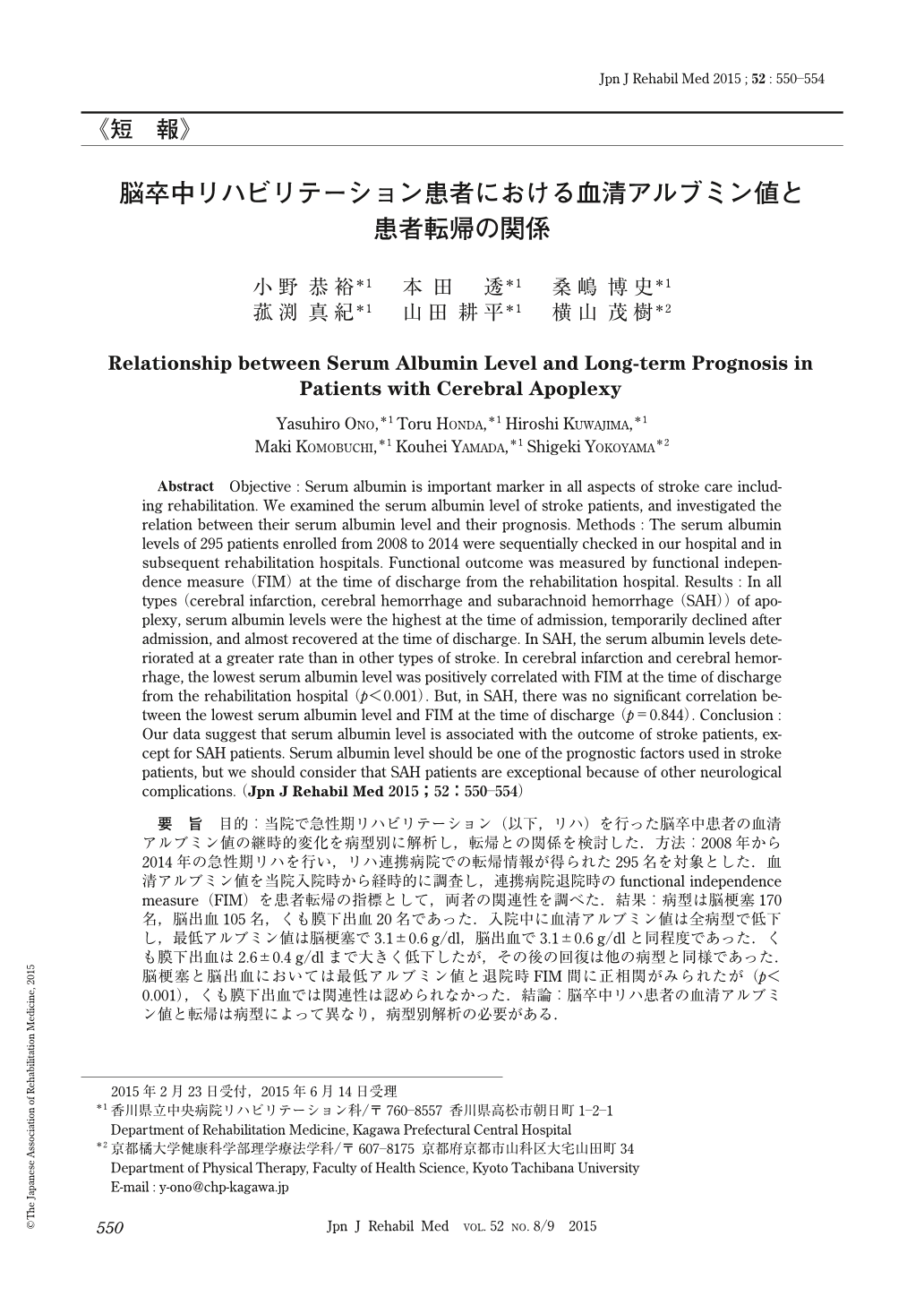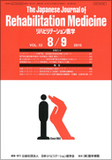Japanese
English
- 販売していません
- Abstract 文献概要
- 1ページ目 Look Inside
- 参考文献 Reference
要旨 目的:当院で急性期リハビリテーション(以下,リハ)を行った脳卒中患者の血清アルブミン値の継時的変化を病型別に解析し,転帰との関係を検討した.方法:2008年から2014年の急性期リハを行い,リハ連携病院での転帰情報が得られた295名を対象とした.血清アルブミン値を当院入院時から経時的に調査し,連携病院退院時のfunctional independence measure(FIM)を患者転帰の指標として,両者の関連性を調べた.結果:病型は脳梗塞170名,脳出血105名,くも膜下出血20名であった.入院中に血清アルブミン値は全病型で低下し,最低アルブミン値は脳梗塞で3.1±0.6g/dl,脳出血で3.1±0.6g/dlと同程度であった.くも膜下出血は2.6±0.4g/dlまで大きく低下したが,その後の回復は他の病型と同様であった.脳梗塞と脳出血においては最低アルブミン値と退院時FIM間に正相関がみられたが(p<0.001),くも膜下出血では関連性は認められなかった.結論:脳卒中リハ患者の血清アルブミン値と転帰は病型によって異なり,病型別解析の必要がある.
Abstract Objective : Serum albumin is important marker in all aspects of stroke care including rehabilitation. We examined the serum albumin level of stroke patients, and investigated the relation between their serum albumin level and their prognosis. Methods : The serum albumin levels of 295 patients enrolled from 2008 to 2014 were sequentially checked in our hospital and in subsequent rehabilitation hospitals. Functional outcome was measured by functional independence measure (FIM) at the time of discharge from the rehabilitation hospital. Results : In all types (cerebral infarction, cerebral hemorrhage and subarachnoid hemorrhage (SAH)) of apoplexy, serum albumin levels were the highest at the time of admission, temporarily declined after admission, and almost recovered at the time of discharge. In SAH, the serum albumin levels deteriorated at a greater rate than in other types of stroke. In cerebral infarction and cerebral hemorrhage, the lowest serum albumin level was positively correlated with FIM at the time of discharge from the rehabilitation hospital (p<0.001). But, in SAH, there was no significant correlation between the lowest serum albumin level and FIM at the time of discharge (p=0.844). Conclusion : Our data suggest that serum albumin level is associated with the outcome of stroke patients, except for SAH patients. Serum albumin level should be one of the prognostic factors used in stroke patients, but we should consider that SAH patients are exceptional because of other neurological complications.

Copyright © 2015, The Japanese Association of Rehabilitation Medicine. All rights reserved.


